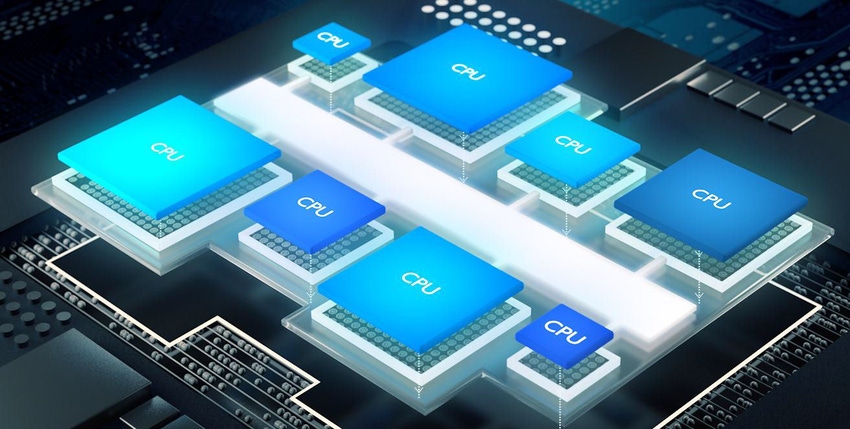Chip designer ARM has announced a major new generation of processor microarchitecture, designed to enable the power and flexibility required by the artificial intelligence era.
March 21, 2017

Chip designer ARM has announced a major new generation of processor microarchitecture, designed to enable the power and flexibility required by the artificial intelligence era.
It’s rather awkwardly named DynamIQ – pronounced ‘dynamic’ but with a reference to intelligence. DynamIQ builds on the big.LITTLE (yes, this has been going on for a while) chip design launched in 2011, which focused on multiple heterogeneous cores and only using the one best suited to the job – i.e. smaller, more power-efficient cores for simpler tasks.
DynamIQ is the new microarchitecture for the whole Cortex-A processor family – the most powerful end of the ARM range. So the focus here is things like smartphones, server chips and embedded compute applications such as cars and homes. It does not affect very low-power embedded chips such as might be found in many future IoT use-cases.
Here are some of the details of what DynamIQ brings to the table, as per a blog written by Nandan Nayampally, GM of the ARM Compute Products Group.
New dedicated processor instructions for ML and AI: Cortex-A processors designed for DynamIQ technology can be optimized to deliver up to a 50x boost in AI performance over the next 3-5 years relative to Cortex-A73-based systems today and up to 10x faster response between CPU and specialized accelerator hardware on the SoC that can unleash substantially better combined performance.
Increased multi-core flexibility: SoC designers can scale up to eight cores in a single cluster and each core can have different performance and power characteristics. These advanced capabilities enable faster responsiveness to ML and AI applications. A redesigned memory subsystem enables both faster data access and enhance power management
More performance within restricted thermal budgets: Efficient and much faster switching of software tasks to match the right-sized processor for optimal performance and power is further enhanced through independent frequency control of individual processors
Safer autonomous systems: DynamIQ brings greater levels of responsiveness for ADAS solution and increased safety capabilities which will enable partners to build ASIL-D compliant systems for safe operation under failure conditions.
The slide below reveals that DynamIQ is essentially about future-proofing the ARM Cortex-A design, to accommodate potentially limitless numbers and types of CPU cores. The AI stuff seems to be as much a marketing hook as anything. Yes, such chips are likely to play a major role in the evolution of AI, but they will also be found in many other computing environments, as indicated by the 100 billion ARM-based chips the company expects to ship between now and 2021.
Daily Poll
Do you feel the industry has a sound enough understanding of artificial intelligence?
Sort of, but the buzz has created confusion (53%, 9 Votes)
Not at all (29%, 5 Votes)
Yes, education has been good so far (18%, 3 Votes)
Total Voters: 17

About the Author(s)
You May Also Like








.png?width=300&auto=webp&quality=80&disable=upscale)


_1.jpg?width=300&auto=webp&quality=80&disable=upscale)


.png?width=800&auto=webp&quality=80&disable=upscale)